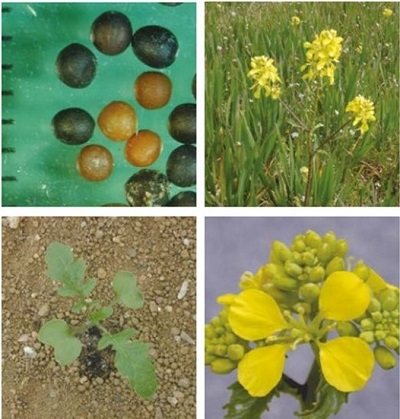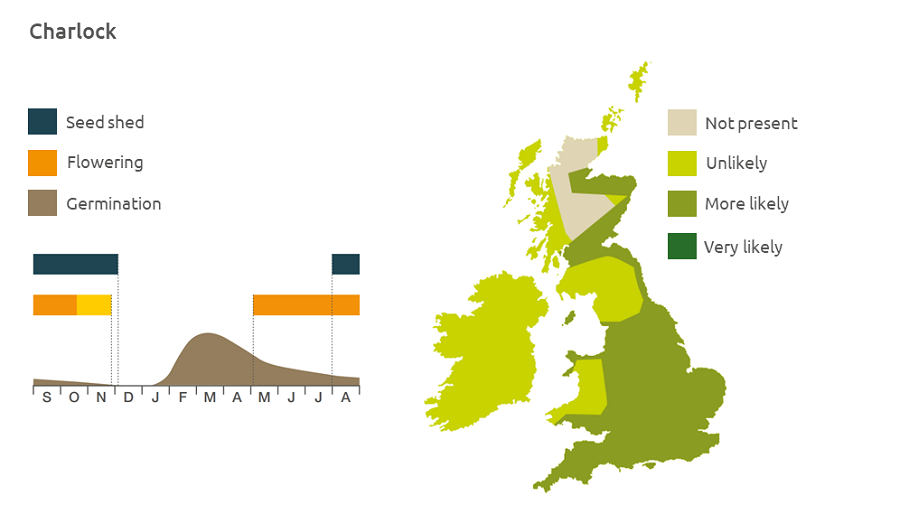- Home
- Knowledge library
- Distribution and biology of charlock in the UK
Distribution and biology of charlock in the UK
Charlock is a common broad-leaved weed on arable land. Find out how to identify and control it.
Overview
Charlock (Sinapis arvensis) is common on arable land. It used to be a serious weed of cereals, but it is now more commonly found in broad-leaved crops. It is highly competitive in cereals. It mainly germinates in spring, but summer-germinating plants and plants emerging in the autumn in early-sown oilseed rape may survive a mild winter. The seeds can be dispersed in crop seeds, or by ingestion by birds.
- It is particularly competitive in winter wheat and winter oilseed rape
- It has value to biodiversity
Description
Charlock is a 20–200 cm high, dark-green to purplish hairy annual; it can be very variable in form, with irregularly toothed leaves.
The pale yellow four-petalled flowers occur at the top of the flowering spike.
Key features
Flowers: The flower sepals spread horizontally.
Fruit: The fruit has a beak 7 mm or more long.

Location and life cycle

Geographic distribution
Charlock is generally a weed of lowland areas though it has been found at altitudes up to 450 m. It grows in open habitats, such as arable fields or recently disturbed soil.
Soil type
It is found on well-aerated and well-watered but drained, alkaline-rich soils, which have a high organic matter content.
Seed statistics
- Seed longevity: >5 years
- Germination depth: 4.3 cm
- Seed weight: 2 mg
- Seeds/flower: 8–13
- Seeds/plant: 16–25,000
Management
Charlock is difficult to control in brassica crops but is readily controlled by residual and foliar herbicides in cereal and legume crops. Between 4 and 6 weeks after germinating, its hairy leaf surface traps herbicide so it is more susceptible at this stage.
For advice on herbicides, please speak with your agronomist or adviser.
When was this information last updated?
This page is based on content from the encyclopaedia of arable weeds publication. Since it was first released in 2008, the publication has been redesigned several times but not revised. However, it remains a good foundation for general information on the distribution and biology of weeds.

